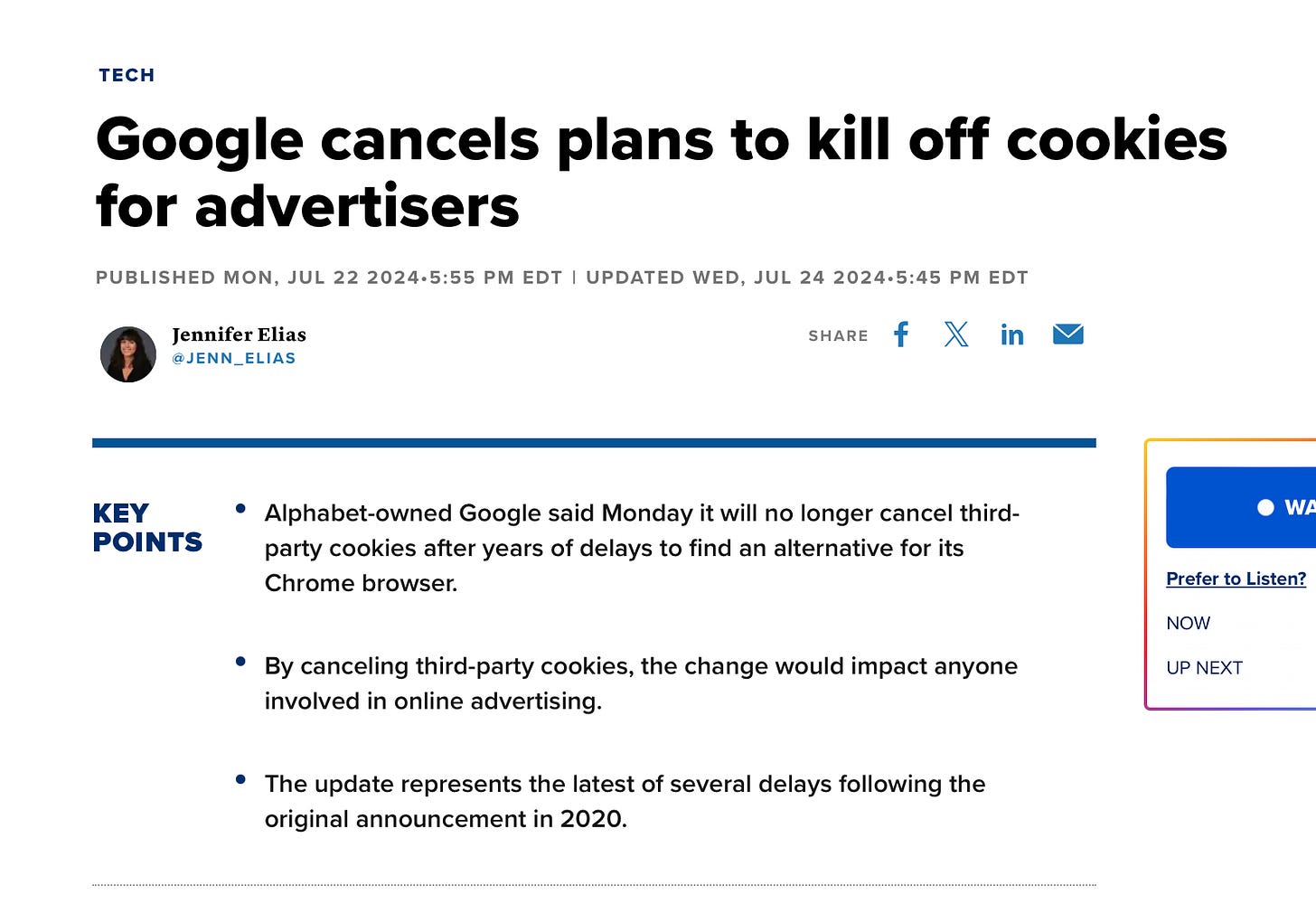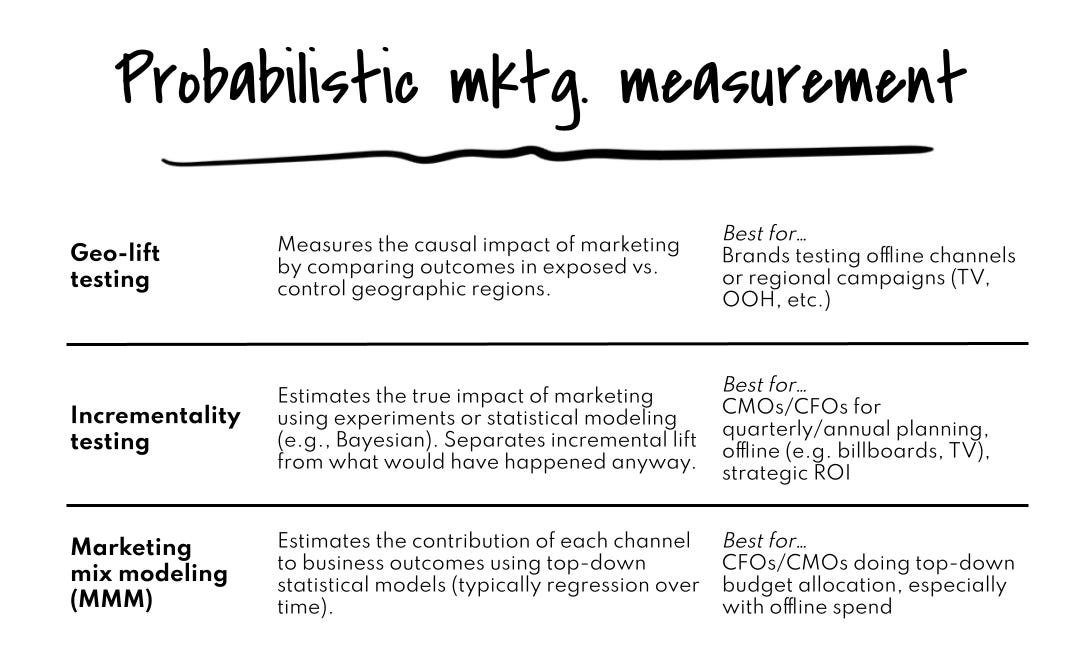A definitive guide to marketing attribution
Growth marketing leader Tim Dalrymple (Webflow, Notion, Roadway) breaks down how to stop wasting your marketing budget
👋 Hi, it’s Kyle Poyar and welcome to Growth Unhinged, my weekly newsletter exploring the hidden playbooks behind the fastest-growing startups.
Up today: a definitive guide to marketing attribution for startups.1 I get it, attribution isn’t a new topic. Nor is it particularly sexy — there’s no such thing as vibe attribution, after all. But it can make the difference between startups that achieve sustainable breakout growth and those that die trying.
For help I turned to growth marketing leader Tim Dalrymple. Tim led growth marketing for standout companies like Webflow and Notion. And today he’s co-founder and CEO of Roadway, which helps growth marketing teams at Clay, Graphite, Reforge and many others put their end-to-end attribution on autopilot.
You’ve heard the line:
“Half the money I spend on marketing is wasted; the trouble is, I don't know which half.”
John Wanamaker said it in 1919. Over 100 years ago—74 years before the internet. And yet, somehow that idea still echoes in every SaaS company in 2025.
We’d be foolish to believe all marketing investments are 100% efficient. They’re certainly not. The real waste (in growth marketing budgets) is closer to 15-25%—but that can still be significant—and it comes from a handful of very common mistakes that are all related to one thing: marketing attribution.
Our goal here is to help you understand what you need for marketing attribution—as well as when and why you need it—so you can build a predictable growth engine you control, and can maximize the revenue you return from your marketing investments.
If you take nothing else away from this post, this is the bare minimum (or you will waste a lot of time and money):
At the very least, you need to have campaign-level attribution—across channels—on all of your key growth metrics. Depending on how you implement that, this gives you control over your growth, and is the foundation of building a predictable growth engine.
Many will say it is not possible with your data, or it won’t be impactful for your company. It is, and it will be. There are multiple ways of achieving this, and there’s far too many growth marketers, founders and investors that are told it’s not possible or unimportant. Push back.
Marketing attribution 101
Marketing attribution refers to different ways you can track results from marketing activities on different parts of your business—but that’s selling it extremely short. Plain and simple, it’s how your business grows.
When built right, it tracks what marketing activities lead to revenue, and it’s tied to the levers your team controls—so they can optimize and scale those channels and revenue from their activities (that’s why it’s important you choose the right solutions as you scale).
This is not shouldn’t be optional. There are very few, if any, B2B SaaS companies over $100M ARR that don’t have this infrastructure for growing their business predictably. I’m sure you’ve heard that second time founders commonly say, “distribution [not product] is king” (they are right)—marketing attribution measures your distribution channels so you can maximize revenue from your marketing investment (and chances of success at building a repeatable growth engine).
The high-level impact when you get this right:
Confidence in scaling your marketing investment: You know exactly what’s working—and what’s not—on the campaign level across channels. But more importantly, you know the quality of those customers, since you have campaign-level attribution on all of your key growth metrics. So you can make the black-box clearer and optimize your teams time and spend smarter.
Scaling with leaner teams: Growth marketers spend hours each week wrangling siloed data to make informed decisions that drive impact—yet also waste hours on “impactless” tasks caused by attribution gaps. When they have the right attribution data (across the metrics that matter, exactly when they need it), teams can move faster, do more with less, and focus on real growth drivers.
Why most defer marketing attribution (but shouldn’t)
The word has been muddied over the years, and the implementation has been driven by legacy tools we all use by default (like Google Analytics) so almost everyone falls into a common mistake that costs them a ton down the line.
Many get it wrong because of the marketing and data knowledge gap, but mostly its the martech stack that makes it hard to pass the right IDs across the silos we’ve created over the last two decades. To top things off, the headlines from GDPR’s rollout, Apple’s announcement of ATT, and Google’s cookie deprecation were taken at face value (though as many predicted, most were overblown and rolled back) and were the common tipping point for deferral.

But what’s (still) hard is not unsolvable. Marketing attribution is the map of how to grow your business, and your growth marketing team is an expert on the terrain of product, customers, and market. Providing the best map (and tools) goes a long way, and the impact compounds year after year. It’s is worth putting in the work.
Types of marketing attribution measurement
These definitions are to help you understand what options you have, but also to help set context for the guide to follow. Most companies have multiple methods of measurement; the best layer them to maximize their understanding.
Real marketing attribution
Real marketing attribution is attribution that is based on real trackable actions that tie a user to a marketing traffic source, channel, campaign, or more across business metrics. Commonly used as the foundation for measuring, scaling, and optimizing growth marketing outcomes.
Probabilistic marketing measurement
Probabilistic measurement uses different experimentation and statistical modeling approaches to understand the impact of marketing activities. These are commonly used as supplemental methods in combination with, and/or for auditing, real marketing attribution.
Common (and expensive) marketing attribution mistakes
I see the same marketing attribution mistakes come up again and again. Not only are these expensive — they’re avoidable.
Attribution is not end-to-end: You have traffic source (performance marketing, organic search, etc.) and channel (meta ads, google search, etc.) attribution, but not campaign level (the levers your team controls to optimize and scale).
Attribution missing on key metrics: You have attribution on only some of your metrics (new visitors, sign ups, leads, etc.) but not on key growth metrics like revenue.
Attribution model is not the right fit for your business: You have first-touch or last-touch attribution when you should be using multi-touch to truly understand impact.
Missing key breakdowns on top of attribution: You have campaign-level attribution on key revenue metrics in platforms, but can’t layer on internal data as breakdowns (segment, persona, etc.) to find optimizations platforms won’t know.
Marketing attribution definition is wrong internally: Many of the legacy tools we use like CRMs attribute to content assets and support touchpoints—that’s not marketing attribution. You don’t scale assets, you scale the traffic sources, channels, and campaigns bringing people to those assets.
Measurement methods aren’t right for your business: You’re using a marketing measurement method that doesn’t fit your business or stage of marketing investment.
A simple guide to choosing marketing attribution as you scale
Many will want to think about this in terms of company stages, but really it has to do with marketing investment stages—it’s insurance against inefficient spend and resource allocation or, in other words, confidence in your investments—and there is no one-size-fits-all.
I like to take a works, better, best approach to marketing measurement by stage.
Here’s a simplified overview of what this looks like.
And here are the solutions and tooling to support these approaches.
Are the above tables going to be true for every company? No. The channels you invest in or data you collect could dictate that more than your investment level, but its a benchmark for how to think about maximizing attribution understanding at each stage, without wasting time on things that aren’t going make in impact in current or following stage.
Ultimately, you’re ready when you’re investing enough in marketing that 20% of that investment is large enough that the savings (or reinvestment of that savings) is substantial (i.e. if you are investing $10M/year in your marketing team headcount and growth channels, you’re likely wasting $1.5M-2.5M/year on misallocation of resources and budget because you don’t have a full understanding of what’s working and what’s not).
The unfair advantage people aren’t talking about
Getting it right means you can scale as quickly and efficiently as possible—and it is the only way to build a predictable growth engine.
The teams that do this aren’t the ones you hear on podcasts or see in your twitter feed, they’re too busy growing ARR, but are also actively happy not to talk about it—while they watch their competitors pour money into channels they know aren’t helping them make any meaningful progress.
As we enter the age of the AI-augmented marketer, the teams with marketing attribution built correctly are going to stand out far above the rest in terms of growth and profitability—and it wont even be close.
Editor’s note: This piece has been lightly updated for clarity. Specifically, self-reported attribution is now referred to as manual attribution, which encompasses self-reported attribution along with manual collection of information.











Great article! My main issue with UTM- and click-based attribution—and most attribution tools in general—is that they assume something is impactful just because it can be measured. I’m a big fan of self-reported attribution, and my go-to is analyzing win-paths and loss-paths. Every quarter, run a structured lookback on closed-won and closed-lost deals, using a mix of surveys and interviews to assess impact of GTM touchpoints across the full buying journey (e.g., including post-opportunity motions like custom demo, tailored ROI business cases, etc.). This approach works especially well in Enterprise B2B and long sales cycles, though it becomes resource-heavy if you’re closing 100+ deals a quarter.
For the next quarter, do more of the things that were impactful less of other stuff.
There are some promising tech solutions emerging in this space, but I think it will take time before they can truly replicate this depth of insight.
💡 Love this breakdown, Kyle & Tim. Tim you are spot on that campaign-level attribution is the non-negotiable bedrock —without it, every optimization is a guess.
But once you lock in that campaign lens, the next iceberg is the anonymous gap: all the pre-login clicks that never tie back to a revenue record. That’s where even perfect attribution models still leak budget.
Retroactive identity stitching fixes the hole: the moment a visitor identifies themselves, you rewrite their entire anonymous history onto the contact record—no lag, no re-imports.
Suddenly:
- Multi-touch models are fed the full journey, so budget shifts confidently.
- Dashboard cohorts stop fragmenting when users convert.
- Reps open CRM and feel like they’ve read the prospect’s diary.
If anyone’s wrestling with the anonymous gap, I unpacked the playbook (and the ClickHouse tricks that make it instant) here 👉 https:/www.graph8.com/attribution.